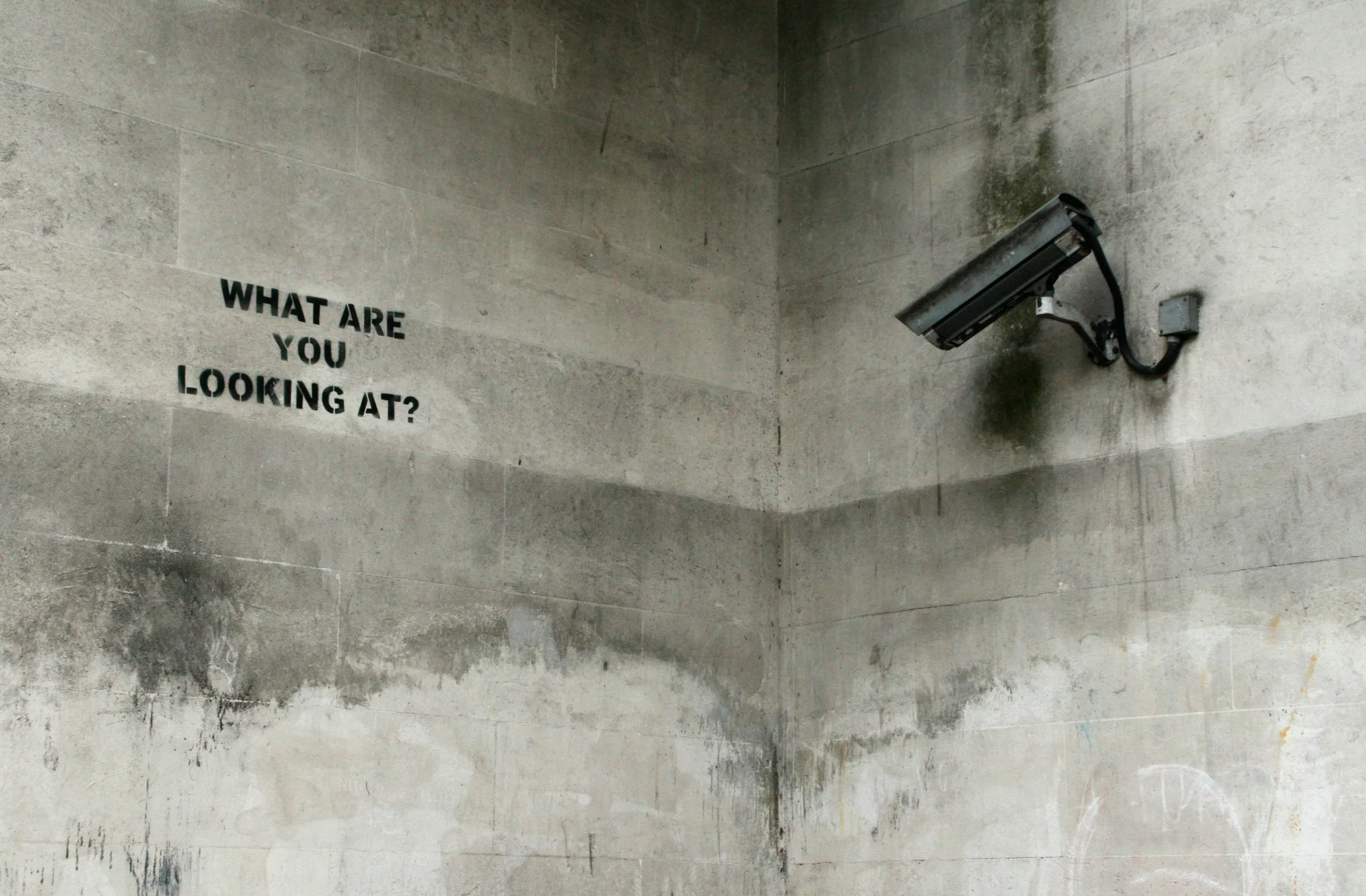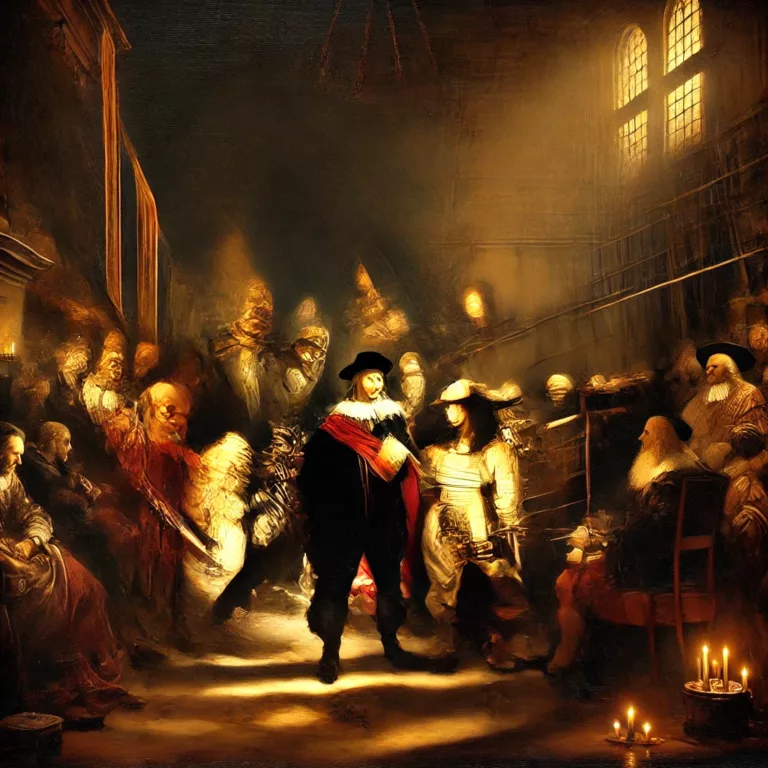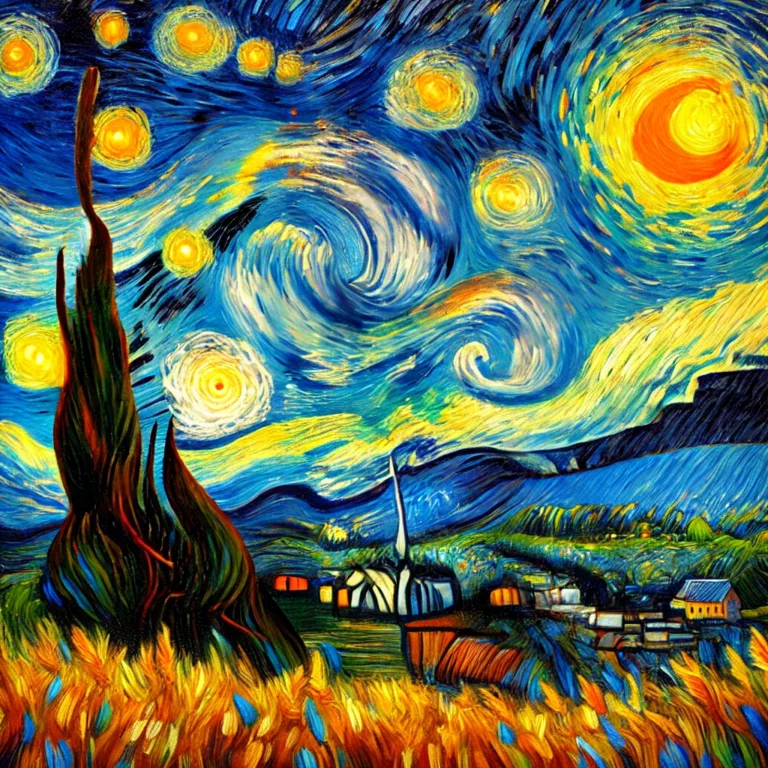Origins and Evolution: From Bristol Walls to Global Recognition
In the shadowy intersection between vandalism and high art, political protest and commercial success, public space and private property, stands the enigmatic figure known only as Banksy. Despite being perhaps the world’s most famous living artist, Banksy’s identity remains a closely guarded secret remarkable achievement in an age of relentless digital surveillance and celebrity obsession. This anonymity is not merely a personal preference but an essential component of the artist’s work, allowing Banksy’s stenciled interventions to speak directly to social issues without the distraction of personality.
1 : Origins and Evolution: From Bristol Walls to Global Recognition
Bristol Beginnings
While Banksy’s true identity remains unconfirmed, the artist is widely believed to have emerged from Bristol’s underground graffiti scene in the early 1990s. Bristol with its rich history of street art, trip-hop music, and counterculture provided the perfect incubator for an artist who would later challenge the boundaries between vandalism and valuable artistic expression.
Banksy’s early work consisted primarily of freehand graffiti as part of Bristol’s DryBreadZ Crew (DBZ). However, a pivotal moment reportedly occurred when, hiding from police under a garbage truck, the artist conceived of using stencils to reduce the time needed to complete pieces. This pragmatic decision would evolve into a distinctive artistic technique that allows for both precision and rapid execution essential qualities for illegal street interventions .
From Local Phenomenon to Global Artist
By the early 2000s, Banksy had expanded beyond Bristol to London, where increasingly ambitious and politically charged works began appearing on walls, bridges, and other urban surfaces. The artist’s distinctive visual style characterized by crisp stenciled images, sardonic humor, and pointed social commentary quickly gained attention within street art circles and eventually the broader art world.
Banksy’s unofficial 2003 infiltration of the Tate Britain, where the artist surreptitiously installed a countryside scene embellished with police tape, marked an early institutional intervention. Similar guerrilla installations at the Louvre, Museum of Modern Art, Metropolitan Museum of Art, and British Museum demonstrated not only audacity but a savvy understanding of institutional critique challenging museums from within their own walls.
The 2005 series of nine images painted on the West Bank barrier separating Israel from Palestinian territories represented a significant internationalization of Banksy’s work. These images, which included scenes of children breaking through to an idyllic beach and a living room window revealing mountains beyond, brought global attention to both the artist and the controversial structure itself. This project demonstrated how Banksy’s work could transcend mere vandalism to become a powerful form of political discourse accessible to audiences worldwide.
Artistic Style and Techniques: The Visual Language of Subversion
Stencil Mastery and Visual Economy
Banksy’s technical approach centers on stencils, allowing for both precision and speed crucial qualities for an artist working illegally in public spaces. While not the inventor of stencil graffiti (predecessors include Blek le Rat and John Fekner), Banksy has refined the technique to create instantly recognizable and visually powerful images that can be rapidly deployed in high-risk environments.
The stencil technique also contributes to a distinctive visual economy in Banksy’s work complex ideas distilled into immediately comprehensible images. This graphic clarity ensures that messages resonate with diverse audiences regardless of artistic background, educational level, or cultural context. The accessibility of Banksy’s visual language is central to its democratic ethos and widespread impact.
Juxtaposition and Subversion of Symbols
A key element of Banksy’s artistic strategy involves juxtaposing contradictory elements to create visual paradoxes that challenge viewers’ expectations. Recurring examples include:
- Symbols of authority (police officers, surveillance cameras) engaged in frivolous or compromising activities
- Innocent figures (children, animals) placed in violent or dystopian contexts
- Classical art references recontextualized in contemporary settings
- Military imagery (soldiers, weapons) transformed through unexpected interactions
These juxtapositions function as visual short circuits that momentarily disrupt conventional thinking, creating spaces for reconsideration of normalized social conditions. In “Girl with Balloon” (2002), for instance, the innocent image of a child reaching for a heart-shaped balloon creates a poignant commentary on lost innocence and hope.
Strategic Location and Context
Unlike gallery art intended for neutral white-cube spaces, Banksy’s work exists in dynamic dialogue with its physical environment. The artist strategically selects locations that amplify or transform the meaning of images:
- Placing anti-capitalist messages in commercial districts
- Installing pro-immigration works near border zones
- Creating anti-war imagery near military or governmental sites
- Inserting critiques of surveillance in heavily monitored areas
This site-specificity means that Banksy’s works cannot be fully understood when removed from their original context a fact that has created tension as pieces are increasingly extracted from walls for private collection or gallery display.
Thematic Exploration: The Politics of Banksy’s Art
Anti-Authoritarianism and Surveillance Critique
One of Banksy’s most consistent targets is authoritarianism in its various manifestations from obvious symbols like police and military to more insidious forms of control like surveillance capitalism. Recurring images of CCTV cameras, police officers, and listening devices reflect a deep skepticism toward state and corporate monitoring.
In works like “One Nation Under CCTV” (2008) a massive mural in London featuring a child painting the titular slogan while being watched by a security camera and police officer Banksy highlights the normalization of surveillance culture. Similarly, the “Spy Booth” mural in Cheltenham (2014), depicting intelligence agents surrounding a telephone booth near GCHQ headquarters, offered a direct critique of government surveillance programs revealed by Edward Snowden.
This anti-authoritarian stance extends beyond specific political positions to a broader questioning of power relationships and control mechanisms in contemporary society. By depicting authority figures in compromising or absurd situations, Banksy undermines their presumed legitimacy and invites viewers to question structures often taken for granted.
Capitalism and Consumer Culture
Banksy’s work consistently interrogates capitalist systems and consumer culture through various approaches:
- Depicting shoppers as mindless zombies or religious devotees
- Transforming commercial logos and advertising strategies for subversive purposes
- Creating fake banknotes featuring altered imagery (replacing the Queen with Princess Diana)
- Highlighting the commodification of dissent and the paradoxes of anti-capitalist art in the marketplace
The artist’s complex relationship with the art market simultaneously criticizing and profiting from it represents one of the most intriguing contradictions in Banksy’s practice. This tension reached its apotheosis in the infamous 2018 Sotheby’s auction where “Girl with Balloon” self-destructed immediately after selling for £1.04 million, only to potentially increase in value in its shredded state (renamed “Love is in the Bin”).
War, Militarism, and Violence
Anti-war sentiment permeates Banksy’s oeuvre, with numerous works depicting soldiers, weapons, and military scenes subverted through unexpected elements. In “Flower Thrower” (also known as “Love is in the Air,” 2003), a masked protestor prepares to throw not a Molotov cocktail but a bouquet of flowers transforming an image of violent resistance into a symbol of peaceful protest.
Similarly, works depicting children playing on military equipment, soldiers painting peace symbols, or weapons transformed into playful objects consistently undermine militaristic imagery by introducing elements of innocence, play, or beauty. These juxtapositions challenge the normalization of violence and military power in contemporary culture.
Migration, Borders, and Human Rights
Banksy has repeatedly addressed issues of migration, borders, and the refugee crisis through powerful interventions. Beyond the West Bank wall paintings, significant projects include:
- “The Son of a Migrant from Syria” (2015) in Calais, depicting Steve Jobs with a computer and bundle of possessions, reminding viewers that the Apple founder was the son of a Syrian migrant
- Installations at the Calais refugee camp including imagery from “Les Misérables” and a modified version of Theodore Géricault’s “The Raft of the Medusa”
- The rescue vessel MV Louise Michel, funded by Banksy to assist refugees crossing the Mediterranean
- “Dismaland” (2015), which included installations directly addressing the refugee crisis, including a pond with remote-controlled migrant boats
These works highlight the human consequences of border policies and challenge dehumanizing narratives about migrants and refugees. By connecting historical examples of migration to contemporary crises, Banksy’s work contradicts xenophobic rhetoric and emphasizes shared humanity across borders.
“Girl with Balloon”: Anatomy of an Iconic Work
Origins and Evolution
“Girl with Balloon,” perhaps Banksy’s most recognizable image, first appeared as a series of stencil graffiti works in London around 2002. The original version featured a young girl reaching toward a red, heart-shaped balloon carried away by wind, accompanied by the text “There is always hope.” The stark black and white stencil contrasted with the vivid red balloon, creating a striking visual that combined innocence, loss, and aspiration.
The image quickly resonated with the public, eventually being reproduced as prints, on canvas, and in various unauthorized merchandise. In 2017, it was voted Britain’s favorite artwork in a Samsung poll, demonstrating its extraordinary popular appeal beyond traditional art audiences.
Symbolic Interpretations
The deceptive simplicity of “Girl with Balloon” allows for multiple interpretations:
- As a symbol of lost innocence or childhood
- As a meditation on hope and its fragility
- As a commentary on aspiration and things just beyond reach
- As a representation of freedom and its limitations
The ambiguity of the image—is the balloon floating away or is the girl about to catch it?—creates a tension that contributes to its emotional resonance. Different viewers can project their own experiences onto the scene, finding either hope or melancholy depending on their perspective.
The Sotheby’s Incident
The artwork achieved unprecedented notoriety in October 2018 when, moments after selling for £1.04 million at Sotheby’s auction house in London, the canvas began to self-destruct. A shredder hidden within the frame activated, partially shredding the artwork before stopping halfway through. Banksy later posted a video revealing the mechanism had been installed years earlier in anticipation of the eventual sale.
This event simultaneously an art happening, institutional critique, and media sensation transformed the work into a new piece titled “Love is in the Bin.” Sotheby’s claimed this represented “the first artwork in history to have been created live during an auction,” while critics debated whether the stunt represented genuine anti-establishment sentiment or sophisticated market manipulation.
When “Love is in the Bin” resold in 2021 for £18.6 million a nearly 1800% increase in value it highlighted the paradoxical relationship between Banksy’s anti-commercial messaging and the market’s ability to absorb and commodify even the most radical gestures of resistance.
Beyond the Streets: Exhibitions, Films, and Books
Curated Exhibitions and Installations
While maintaining an outsider stance, Banksy has increasingly orchestrated elaborate exhibition projects that extend beyond individual street pieces:
- Turf War (2003): Held in a London warehouse, featuring painted live animals and other provocative installations
- Barely Legal (2006): Los Angeles exhibition featuring a painted elephant, bringing celebrity attention to Banksy’s work
- The Village Pet Store and Charcoal Grill (2008): New York installation featuring animatronic animal hybrids commenting on factory farming and genetic engineering
- Dismaland (2015): A “bemusement park” in Weston-super-Mare featuring contributions from 58 artists, explicitly parodying Disneyland while addressing political issues including the refugee crisis, surveillance, and economic inequality
- Walled Off Hotel (2017): A functional hotel in Bethlehem with “the worst view in the world” directly facing Israel’s separation barrier, serving as both art installation and actual accommodation
These projects demonstrate Banksy’s evolution from simple street interventions to complex, multi-faceted art experiences that engage more deeply with communities and create immersive environments for artistic and political messages.
Cinematic Work
Banksy’s 2010 documentary film “Exit Through the Gift Shop” began as a project about street artists but evolved into a meditation on authenticity, commercialization, and the nature of art itself. Following eccentric French shopkeeper Thierry Guetta’s transformation into street artist “Mr. Brainwash,” the film raised questions about whether it documented real events or constituted an elaborate art prank.
The film received critical acclaim, including an Academy Award nomination for Best Documentary Feature, bringing Banksy’s work to new audiences while maintaining the artist’s anonymity (Banksy’s face and voice were disguised throughout).
Publications
Banksy has also released several books documenting their work:
- Banging Your Head Against a Brick Wall (2001)
- Existencilism (2002)
- Cut It Out (2004)
- Wall and Piece (2005)
- You Are an Acceptable Level of Threat (updated periodically)
These publications have helped preserve ephemeral street works, contextualize individual pieces within a broader artistic project, and articulate the political philosophy underlying Banksy’s visual interventions.
The Identity Question: Anonymity as Artistic Strategy
Theories and Speculations
Despite countless investigations by journalists, art experts, and online sleuths, Banksy’s identity remains officially unconfirmed. Various theories have named Robin Gunningham, Robert Del Naja (of trip-hop group Massive Attack), Jamie Hewlett (co-creator of Gorillaz), and others as possible candidates. Geographic analysis of early works, voice analysis from interviews, and slip-ups by associates have all contributed to speculation but no definitive proof.
A 2008 investigation by The Mail on Sunday identified Gunningham as the most likely candidate based on school records, former addresses, and photographic evidence. This theory gained further support from a 2016 study by Queen Mary University of London using geographic profiling techniques to link Banksy’s artwork locations with addresses associated with Gunningham.
Strategic Significance of Anonymity
Banksy’s anonymity serves multiple strategic functions beyond personal privacy:
- Legal protection: Creating unauthorized public art constitutes vandalism in most jurisdictions
- Artistic freedom: Separation from identity allows greater experimentation without personal branding constraints
- Myth-building: Mystery enhances public fascination and media coverage
- Institutional critique: Rejecting the art world’s personality cult and celebrity mechanisms
- Collective possibility: Anonymous work suggests anyone could be Banksy, democratizing artistic potential
In maintaining anonymity while achieving global fame, Banksy has created a unique position that contradicts conventional art world trajectories dependent on personal branding and networking. This contradiction allows the artist to simultaneously operate as an outsider critic and a market-influential insider.
The Banksy Team and Organizational Infrastructure
While public imagination often conceives of Banksy as a lone figure working in shadows, evidence suggests a more complex operational reality. Major installations, exhibitions, and logistically complex pieces likely require team coordination, technical expertise, and organizational infrastructure.
Pest Control, the authentication body established in 2008, verifies genuine Banksy works and manages the artist’s commercial affairs. This official handling mechanism helps control the market for Banksy’s work while maintaining distance between the anonymous artist and commercial transactions.
Market Paradoxes: Commodifying Anti-Capitalism
Street to Gallery: The Commercialization Trajectory
Banksy’s relationship with the art market represents one of the most fascinating contradictions in contemporary art. Work that often explicitly criticizes capitalism, consumerism, and commodification has become highly valuable, collected by celebrities and institutions worldwide.
This trajectory began with limited edition prints produced through Pictures on Walls (a print studio co-founded by Banksy), accelerated with gallery shows like 2006’s “Barely Legal” in Los Angeles, and reached new heights with seven-figure auction results. By 2021, works like “Game Changer” depicting a child playing with a nurse superhero doll could command £16.8 million at Christie’s.
Authentication and Market Control
In response to unauthorized sales and forgeries, Banksy established Pest Control in 2008 as the official authentication body for their work. This organization issues certificates of authenticity for legitimate works, declines to authenticate street pieces removed without permission, and occasionally releases new limited editions.
This system allows Banksy to maintain some control over commercialization while distinguishing between sanctioned market participation and unauthorized exploitation. However, it also institutionalizes practices seemingly at odds with the anti-establishment ethos of street art.
Self-Subversion and Market Critique
Banksy has repeatedly incorporated market critique within marketable works, creating recursive loops of self-reference that acknowledge these contradictions:
- Paintings depicting auction scenes with text like “I can’t believe you morons actually buy this shit”
- The Sotheby’s shredding incident
- The temporary NYC street stall selling authentic, unsigned works for $60 (documented in the film “Banksy Does New York”)
- Images of art collectors and consumers as sheep or mindless followers
These gestures suggest self-awareness about the paradoxical position Banksy occupies—simultaneously critiquing and benefiting from art market mechanisms. Rather than resolve this contradiction, Banksy incorporates it as subject matter, turning the tension into another layer of artistic commentary.
Legal and Ethical Dimensions: Property, Ownership, and Public Space
The Ownership Question: Who Owns Street Art?
Banksy’s unauthorized interventions in public and private spaces raise complex questions about ownership, property rights, and artistic freedom. When a Banksy appears on a privately owned wall, multiple stakeholders can claim interest:
- The property owner who physically possesses the surface
- The artist who created the image
- The community in which the work appears
- The public who appreciate and interpret the work
- Municipalities with jurisdiction over public space
These competing claims have led to various outcomes, from protective measures (covering works with plexiglass) to complete removal for private sale. The 2014 “Mobile Lovers” case exemplifies these tensions: when the piece appeared on a door owned by a struggling boys’ club in Bristol, Banksy officially gave permission for the club to sell the work (for £403,000), prioritizing community benefit over personal profit.
Institutional Relationships and Legitimization
Despite an anti-establishment stance, Banksy has developed complex relationships with arts institutions. Museums like the British Museum have retroactively acquired Banksy works (including “Peckham Rock,” a fake prehistoric artifact secretly installed in 2005), while major galleries and auction houses eagerly include Banksy pieces in their sales and exhibitions.
This institutional embrace raises questions about the possibility of genuinely subversive art within capitalist systems. Can work critical of institutions maintain its critical edge when validated and valued by those same institutions? Banksy’s navigation of this territory suggests a pragmatic approach using institutional platforms when advantageous while maintaining independence through anonymity and unauthorized interventions.
Legal Status and Criminalization
The legal status of street art varies widely across jurisdictions, with some cities embracing it as cultural heritage while others prosecute it as criminal damage. Banksy’s work exists at this tension point, simultaneously vandalism and valuable cultural production.
As Banksy’s market value increased, property owners who might once have removed graffiti began preserving and protecting these unsolicited additions to their buildings. This shift highlights how market forces can transform perceptions of legality and criminality work identical in execution might be considered either criminal vandalism or valuable gift depending on the creator’s reputation.
Global Impact and Cultural Significance
Influence on Street Art and Contemporary Art
Banksy’s extraordinary success has transformed both street art and the broader contemporary art world:
- Elevating street art from subcultural practice to recognized art form
- Demonstrating the commercial viability of work originating outside traditional art institutions
- Popularizing stencil techniques and politically engaged public art
- Expanding audiences for contemporary art beyond traditional gallery visitors
- Influencing municipal approaches to street art (from criminalization to accommodation)
Artists including Shepard Fairey, JR, Blu, and countless others have built upon Banksy’s model of socially engaged street art, while established institutions increasingly incorporate street art aesthetics and practitioners.
Media Coverage and Popular Understanding of Contemporary Art
Banksy has received unprecedented media attention for a living artist, with new works often generating global news coverage. This visibility has helped broaden public engagement with contemporary art beyond elite circles, introducing critical concepts to audiences who might otherwise remain disconnected from art world discourse.
The readily comprehensible nature of Banksy’s images, combined with their strategic placement and political content, creates accessible entry points for viewers unfamiliar with contemporary art’s often opaque theoretical frameworks. This accessibility represents both a democratization of art discourse and, critics argue, a potential simplification of complex issues.
Digital Reproduction and Global Dissemination
Although physically site-specific, Banksy’s work achieves most of its impact through digital reproduction and social media distribution. High-quality photographs of new pieces circulate globally within hours of appearance, reaching audiences who will never encounter the original works.
This digital afterlife transforms local interventions into global phenomena and ensures that even ephemeral works (quickly removed or painted over) achieve permanence in digital form. The relationship between physical original and digital reproduction raises questions about authenticity, documentation, and value that echo throughout contemporary art discourse.
Recent Developments and Future Trajectories
Banksy created several works responding to the crisis, including:
- “Game Changer” at Southampton Hospital, depicting a child playing with a nurse superhero doll while Batman and Spider-Man figures lie discarded
- Stencils of rats wearing face masks in the London Underground (later removed by cleaning staff)
- A piece showing an elderly woman violently sneezing in Clevedon, Somerset
These works demonstrated Banksy’s continued ability to respond rapidly to current events while maintaining aesthetic and conceptual consistency.
Humanitarian Actions
Beyond artistic interventions, Banksy has increasingly funded direct humanitarian actions, including:
- The MV Louise Michel rescue vessel assisting refugees in the Mediterranean
- Proceeds from various works directed toward hospitals, refugee support organizations, and community centers
- “Mediterranean sea view 2017,” a triptych raising £2.2 million for a Bethlehem hospital
These projects suggest an evolution from purely artistic commentary toward direct social action, though still executed with characteristic visual flair and media awareness.
Future Possibilities
As street art becomes increasingly institutionalized and Banksy’s work commands museum-level prices, questions emerge about future directions:
- Can anonymous operation be maintained indefinitely in an increasingly surveilled world?
- Will the contradictions between anti-market messaging and market success eventually require resolution?
- Can the freshness and surprise of Banksy’s interventions be sustained as audiences come to expect particular approaches?
- Might anonymity eventually give way to a different kind of public presence?
Whatever trajectory unfolds, Banksy has already achieved something remarkable: transforming unauthorized public art from criminalized vandalism to highly valued cultural production while maintaining critical perspective on the very systems that now celebrate the work.
Conclusion: The Paradoxical Legacy
Banksy embodies contradiction anonymous yet famous, anti-commercial yet extremely valuable, outside the system yet influencing its core. Rather than resolving these tensions, the artist has incorporated them into an ongoing artistic project that uses their very irresolvability as creative fuel.
Beyond specific works, Banksy’s most significant contribution may be demonstrating that art can simultaneously achieve popular accessibility, institutional recognition, market success, and political relevance without sacrificing critical edge. By working at the intersection of street credibility and art world legitimacy, Banksy has created a unique position that challenges traditional boundaries between high and low culture, institutional and outsider art, commerciality and critique.
The truly revolutionary aspect of Banksy’s practice lies not in any individual image but in this systematic boundary-crossing proving that walls, whether physical or conceptual, exist to be transgressed. In a divided world increasingly defined by borders and barriers, this message resonates far beyond the art world, suggesting possibilities for creative resistance in multiple domains of contemporary life.
Art11deco







